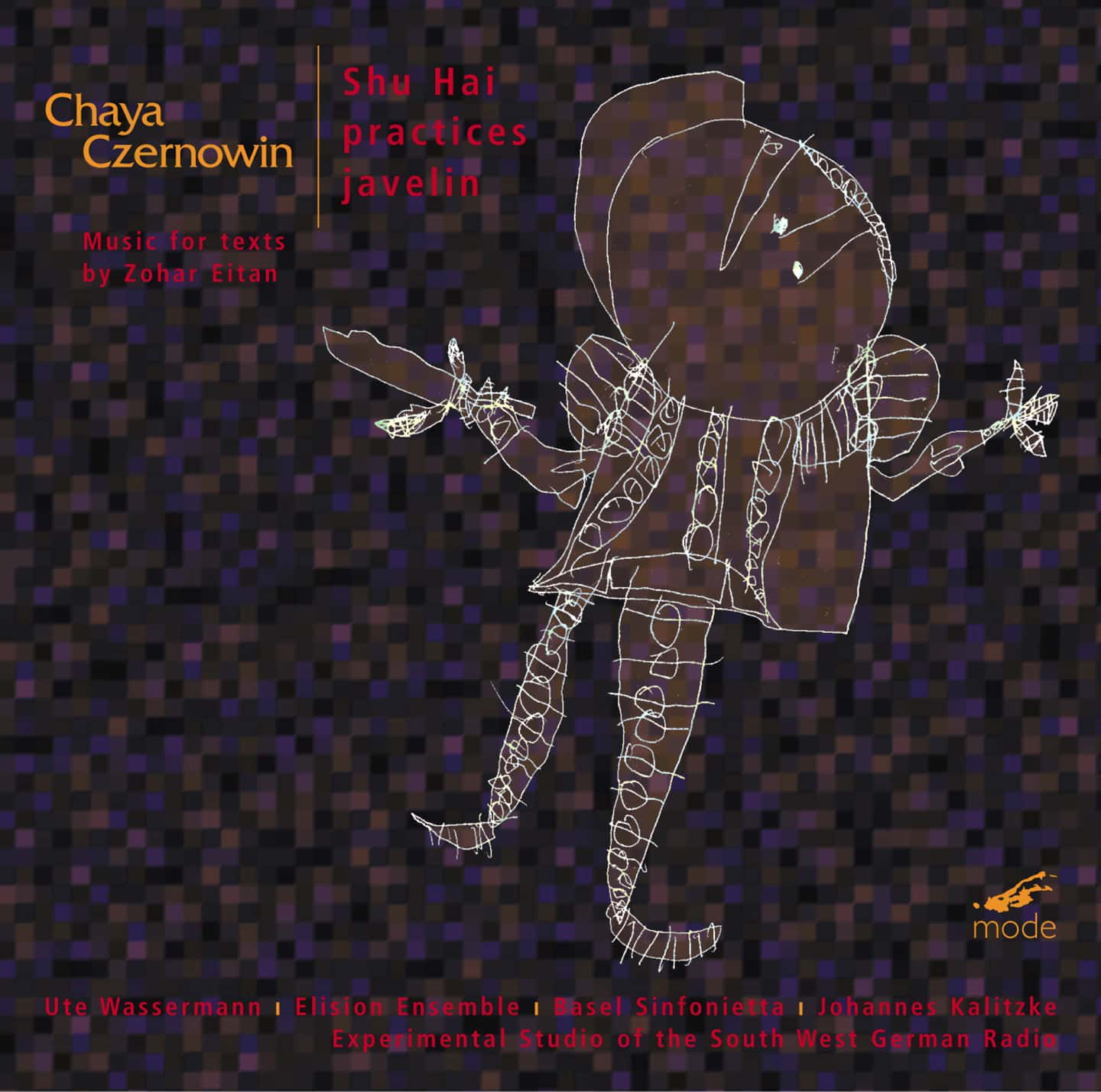Music to texts by Zohar Eitan
- 1. Six miniatures and a simultaneous song (1998) (11:30)
- ELISION ensemble. Simon Hewett, conductor
Trio: Deborah Kayser, soprano. Erkki Veltheimalto, viola.
Geoffrey Morris, guitar.
Quartet: Paula Rae, bass-flute. Brian Catchlove, bass-clarinet. Timothy O’Dwyer, alto saxophone. John Tooby, cello.
Download the MP3 sample (2.3MB) - Shu Hai in an orchestral setting (2000-01)
- for voice, nine recorded versions of the same voice on tape, orchestra and live electronics
2. First orchestral entrance (4:57)
3. First vocal entrance (5:59)
4. Second orchestral entrance (4:41)
5. Second vocal entrance (13:59)Ute Wassermann, voice (live and recorded)
Basel Sinfonietta. Johannes Kalitzke, conductor
Live electronics: Experimental Studio of Heinrich Strobel Stiftung SWR.
André Richard, director
Download the MP3 sample (2.7MB)
- Shu Hai mitamen behatalat kidon (1996-97)
- for solo female voice, nine versions of the same voice on tape, and live electronics
6. First Movement (13:12)
7. Second Movement (18:25)Ute Wassermann, voice
Live electronics: Experimental Studio of Heinrich Strobel Stiftung SWR.
André Richard, director
Download the MP3 sample (1.7MB)
While each of the pieces on this CD is independent, the two later pieces also reference elements of the 1997 piece Shu Hai mitamen behatalat kidon.
Shu Hai Mitamen Behatalat Kidon (Shu Hai practices javelin) (1996-97)
for solo female voice, nine versions of the same voice on tape, and live electronics in two movements.
This is an attempt at creating a musical form that could be best described as distilled, non-linear poetry. The piece is written for the singer-vocalist Ute Wassermann, and is especially tailored to – and is inspired by – her multi-dimensional voice and vocal expression which was developed through her involvement with improvisation.
In Shu Hai, a field of vocal behaviors is created – on the one hand, the voice is unrefined and close to an uncensored raw physical expression of emotions; but yet, the voice is forced into extremely controlled, almost unnaturally short temporal formal segments of wild emotional expression. The tension and the friction created by the wildness of the material and its relationship to the controlled, tight form, inform and mold the piece.
Six miniatures and a simultaneous song (1998)
for a trio of guitar, viola & guitar, and a quartet of bass flute, bass clarinet, alto saxophone and cello.
Two very different pieces unfold as a counterpoint to each other, merging into a strange third piece. The trio is fragile, very continuous, refined and highly articulated. The quartet is abrupt, boisterous, at times grotesquely expressive. Together they emerge into a lopsided structure where their different weights, expressions, and dynamism interact. The piece is dedicated to Elision Ensemble, one of Australia’s top new music ensembles.
Shu Hai in orchestral setting (2000-01)
for voice, nine recorded versions of the same voice, orchestra and live electronics.
This piece uses the second movement of the vocal piece Shu Hai and brings it into a dialogue with new orchestral material. The very fragile, intimate poetic fabric of the original Shu Hai is juxtaposed with raw, unruly bouts of the orchestral material – the voice is split into an orchestra of internal voices, the orchestra is unified into a magnified “voice”. This voice is a huge and a heavy physical presence, pushing, lifting – a relentless gesture on the still background of the large panels of Shu Hai practices Javelin.
Chaya Czernowin was born in Israel and has resided in Germany, Japan, and the United States. Various scholarships and prizes supported these years, in which she was able to concentrate on forming her musical language and thought. In 2000 her opera, PNIMA…ins innere was premiered at the Munich Biennale to a strong acclaim, winning the Bayerische Theater Preis 2000. Upcoming commissions and premieres include the Donaueschingen Festival (2002), the Ensemble Intercontemporain with IRCAM technology (Paris, 2003), and an opera for Salzburg Festival (2004). She is currently on the faculty of the University of California in San Diego.

